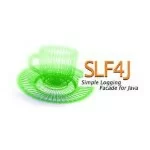Service-Oriented UI with JSF
If the billing department wants to develop a new dialog for creating invoices, it might look like this:
As you can see, the screen above references a customer in the upper part. Clicking the “..” button right behind the short name text field will open the below dialog that allows the user to select the customer:
After pressing “Select” the customer data is shown in the invoice form.
It’s also possible to select a customer by simply entering a customer number or typing a short name into the text fields on the invoice screen. If a unique short name is entered, no selection dialog appears at all. Instead, the customer data is displayed directly. Only an ambiguous short name results in opening the customer selection screen.
The customer functionality will be provided by developers who belong to the customer management team. A typical approach involves the customer management development team providing some services while the billing department developers create the user interface and call these services.
However, this approach involves a stronger coupling between these two distinct departments than is actually necessary. The invoice only needs a unique ID for referencing the customer data. Developers creating the invoice dialog don’t really want to know how the customer data is queried or what services are used in the background to obtain that information.
The customer management developers should provide the complete part of the UI that displays the customer ID and handles the selection of the customer:
Using JSF 2, this is easy to achieve with composite components. The logical interface between the customer management department and the billing department consists of three parts:
- Composite component (XHTML)
- Backing bean for the composite component
- Listener interface for handling the selection results
Provider (customer management departement)
Composite component:
01 02 03 04 05 06 07 08 09 10 11 12 13 14 15 16 17 18 19 20 21 22 23 24 25 26 27 28 29 30 31 32 33 34 35 36 37 38 39 40 41 42 43 44 45 46 47 48 49 50 51 52 53 54 55 56 57 58 59 60 | <!DOCTYPE html PUBLIC "-//W3C//DTD XHTML 1.0 Transitional//EN"<ui:composition> <composite:interface name="customerSelectionPanel" displayName="Customer Selection Panel" shortDescription="Select a customer using it's number or short name"> <composite:attribute name="model" type="org.fuin.examples.soui.view.CustomerSelectionBean" required="true" /> </composite:interface> <composite:implementation> <ui:param name="model" value="#{cc.attrs.model}"/> <ice:form id="customerSelectionForm"> <icecore:singleSubmit submitOnBlur="true" /> <h:panelGroup id="table" layout="block"> <table> <tr> <td><h:outputLabel for="customerNumber" value="#{messages.customerNumber}" /></td> <td><h:inputText id="customerNumber" value="#{model.id}" required="false" /></td> <td> </td> <td><h:outputLabel for="customerShortName" value="#{messages.customerShortName}" /></td> <td><h:inputText id="customerShortName" value="#{model.shortName}" required="false" /></td> <td><h:commandButton action="#{model.select}" value="#{messages.select}" /></td> </tr> <tr> <td><h:outputLabel for="customerName" value="#{messages.customerName}" /></td> <td colspan="5"><h:inputText id="customerName" value="#{model.name}" readonly="true" /></td> </tr> </table> </h:panelGroup> </ice:form> </composite:implementation></ui:composition></html> |
Backing bean for the composite component:
001 002 003 004 005 006 007 008 009 010 011 012 013 014 015 016 017 018 019 020 021 022 023 024 025 026 027 028 029 030 031 032 033 034 035 036 037 038 039 040 041 042 043 044 045 046 047 048 049 050 051 052 053 054 055 056 057 058 059 060 061 062 063 064 065 066 067 068 069 070 071 072 073 074 075 076 077 078 079 080 081 082 083 084 085 086 087 088 089 090 091 092 093 094 095 096 097 098 099 100 101 102 103 104 105 106 107 108 109 110 111 112 113 114 115 116 117 118 119 120 121 122 123 124 125 126 127 128 129 130 131 132 133 134 135 136 137 138 139 140 141 142 143 144 | package org.fuin.examples.soui.view;import java.io.Serializable;import javax.enterprise.context.Dependent;import javax.inject.Inject;import javax.inject.Named;import org.apache.commons.lang.ObjectUtils;import org.fuin.examples.soui.model.Customer;import org.fuin.examples.soui.services.CustomerService;import org.fuin.examples.soui.services.CustomerShortNameNotUniqueException;import org.fuin.examples.soui.services.UnknownCustomerException;@Named@Dependentpublic class CustomerSelectionBean implements Serializable { private static final long serialVersionUID = 1L; private Long id; private String shortName; private String name; private CustomerSelectionListener listener; @Inject private CustomerService service; public CustomerSelectionBean() { super(); listener = new DefaultCustomerSelectionListener(); } public Long getId() { return id; } public void setId(final Long id) { if (ObjectUtils.equals(this.id, id)) { return; } if (id == null) { clear(); } else { clear(); this.id = id; try { final Customer customer = service.findById(this.id); changed(customer); } catch (final UnknownCustomerException ex) { FacesUtils.addErrorMessage(ex.getMessage()); } } } public String getShortName() { return shortName; } public void setShortName(final String shortNameX) { final String shortName = (shortNameX == "") ? null : shortNameX; if (ObjectUtils.equals(this.shortName, shortName)) { return; } if (shortName == null) { clear(); } else { if (this.id != null) { clear(); } this.shortName = shortName; try { final Customer customer = service .findByShortName(this.shortName); changed(customer); } catch (final CustomerShortNameNotUniqueException ex) { select(); } catch (final UnknownCustomerException ex) { FacesUtils.addErrorMessage(ex.getMessage()); } } } public String getName() { return name; } public CustomerSelectionListener getConnector() { return listener; } public void select() { // TODO Implement... } public void clear() { changed(null); } private void changed(final Customer customer) { if (customer == null) { this.id = null; this.shortName = null; this.name = null; listener.customerChanged(null, null); } else { this.id = customer.getId(); this.shortName = customer.getShortName(); this.name = customer.getName(); listener.customerChanged(this.id, this.name); } } public void setListener(final CustomerSelectionListener listener) { if (listener == null) { this.listener = new DefaultCustomerSelectionListener(); } else { this.listener = listener; } } public void setCustomerId(final Long id) throws UnknownCustomerException { clear(); if (id != null) { clear(); this.id = id; changed(service.findById(this.id)); } } private static final class DefaultCustomerSelectionListener implements CustomerSelectionListener { @Override public final void customerChanged(final Long id, final String name) { // Do nothing... } }} |
Listener interface for handling results:
01 02 03 04 05 06 07 08 09 10 11 12 13 14 15 16 | package org.fuin.examples.soui.view;/** * Gets informed if customer selection changed. */public interface CustomerSelectionListener { /** * Customer selection changed. * * @param id New unique customer identifier - May be NULL. * @param name New customer name - May be NULL. */ public void customerChanged(Long id, String name);} |
User (billing departement)
The invoice bean simply uses the customer selection bean by injecting it, and connects to it using the listener interface:
01 02 03 04 05 06 07 08 09 10 11 12 13 14 15 16 17 18 19 20 21 22 23 24 25 26 27 28 29 30 31 32 33 34 35 36 37 38 39 40 41 42 43 | package org.fuin.examples.soui.view;import java.io.Serializable;import javax.annotation.PostConstruct;import javax.enterprise.context.SessionScoped;import javax.enterprise.inject.New;import javax.inject.Inject;import javax.inject.Named;@Named("invoiceBean")@SessionScopedpublic class InvoiceBean implements Serializable { private static final long serialVersionUID = 1L; @Inject @New private CustomerSelectionBean customerSelectionBean; private Long customerId; private String customerName; @PostConstruct public void init() { customerSelectionBean.setListener(new CustomerSelectionListener() { @Override public final void customerChanged(final Long id, final String name) { customerId = id; customerName = name; } }); } public CustomerSelectionBean getCustomerSelectionBean() { return customerSelectionBean; } public String getCustomerName() { return customerName; }} |
Finally, in the invoice XHTML, the composite component is used and linked to the injected backing bean:
01 02 03 04 05 06 07 08 09 10 11 12 13 14 15 16 17 18 19 20 21 22 23 24 25 | <!DOCTYPE html PUBLIC "-//W3C//DTD XHTML 1.0 Transitional//EN" <ui:composition template="/WEB-INF/templates/template.xhtml"> <ui:param name="title" value="#{messages.invoiceTitle}" /> <ui:define name="header"></ui:define> <ui:define name="content"> <customer:selection-panel model="#{invoiceBean.customerSelectionBean}" /> </ui:define> <ui:define name="footer"></ui:define> </ui:composition> </html> |
Summary
In conclusion, parts of the user interface that reference data from other departments should be the responsibility of the department that delivers the data. Any changes in the providing code can then be easily made without any changes to the using code. Another important benefit of this method is the harmonization of the application’s user interface. Controls and panels that display the same data always look the same. Every department can also create a repository of its provided user interface components, making the process of designing a new dialog as easy as putting the right components together.
Reference: Service-Oriented UI from our JCG partner Michael Schnell at the A Java Developer’s Life blog.










where is it service oriented ?
bad article